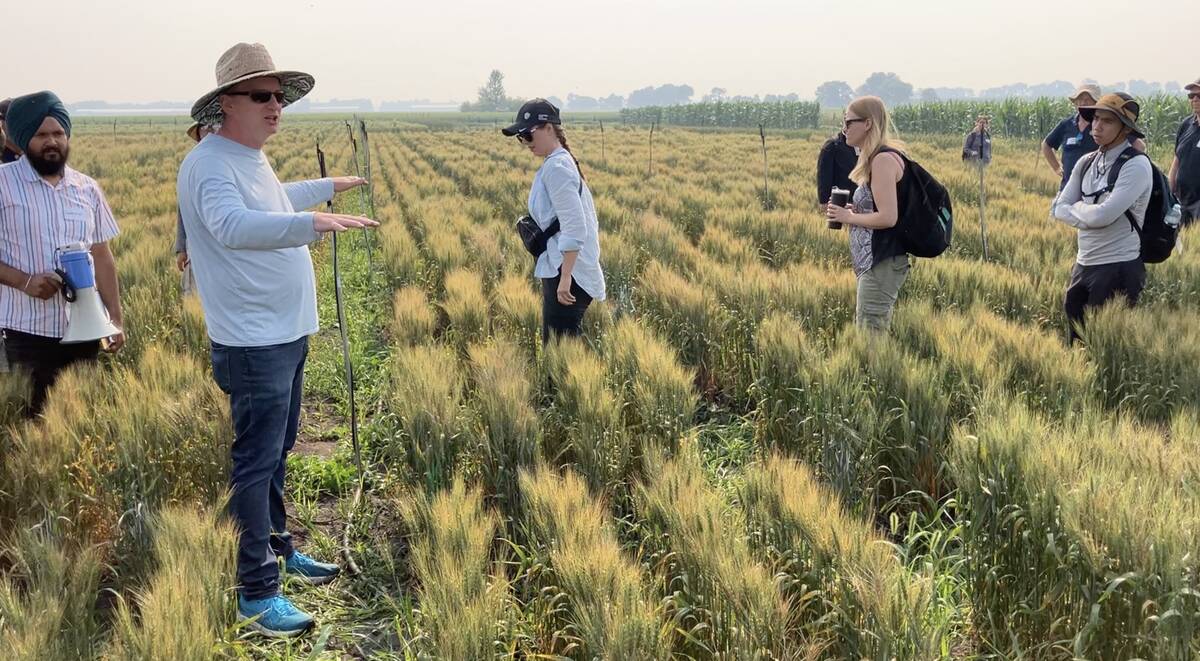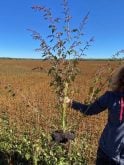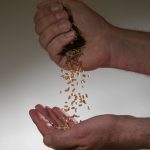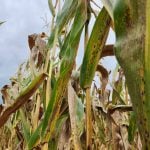North Dakota extension personnel are warning farmers on that side of the border of the arrival of the invasive weed Palmer amaranth.
The North Dakota Department of Agriculture and North Dakota State University Extension Service are advising farmers to scout new conservation plantings for Palmer amaranth, a very aggressive weed that has plagued cropland production in the U.S. South and Midwest.
Palmer amaranth is a type of pigweed that has devastated crops in many states. In some areas, herbicide costs have more than doubled, while producers have not obtained complete control of the weed.
Read Also

VIDEO: Yield-eating weeds and pest insects tackled at field day
The University of Manitoba put the spotlight on its in-progress agricultural research, including the concept of a nurse crop against flea beetles, corn weed control and high-protein canola fertilizer.
In Iowa, Minnesota and other states, Palmer amaranth recently has been found in many counties where native seed mixes used for pollinator or wildlife habitats inadvertently contained Palmer amaranth seed.
In Georgia, most cotton acres have to be hand-weeded because the weed no longer can be controlled with glyphosate.
“Landowners are encouraged to check their fields and contact the North Dakota Department of Agriculture or NDSU Extension Service if a plant is suspected to be Palmer amaranth,” said Brian Jenks, North Central Research Extension Center weed scientist. “The plant should be growing and identifiable prior to hard frosts.”
Palmer amaranth has several unique characteristics that make it hard to control. In optimum conditions, Palmer amaranth has a rapid growth rate, and can grow two to three inches per day and reach six to eight feet tall. One plant can produce up to one million seeds.
While most weeds have a short emergence window in the spring, Palmer amaranth can emerge throughout the growing season. One of the most troubling characteristics is that it is very prone to developing resistance to herbicides.
Some populations are known to be resistant to at least five different herbicide modes of action, including glyphosate.
Palmer amaranth’s distinguishing characteristics are:
- It has very little hair on the leaves and stem, compared with redroot pigweed.
- The petioles are typically as long or longer than the leaf blade.
- It is dioecious, meaning it has separate male and female plants.
- The female plants have spiny bracts at the leaf axils.
- Flowering heads are unbranched and one to two feet long.
- The heads of the female plant are sharp (spiny) to the touch, while the male heads are soft.
Given the history of Palmer amaranth in other locations, learning to identify it so new infestations can be controlled is important for farmers and agronomists, Jenks says.
“This weed is a game changer and will be controlled only by a zero-tolerance policy,” he adds. “Landowners should confirm that any purchased seed does not contain Palmer amaranth.”
For more information on Palmer amaranth, including how to identify it, go to www.ag.ndsu.edu/weeds.



















